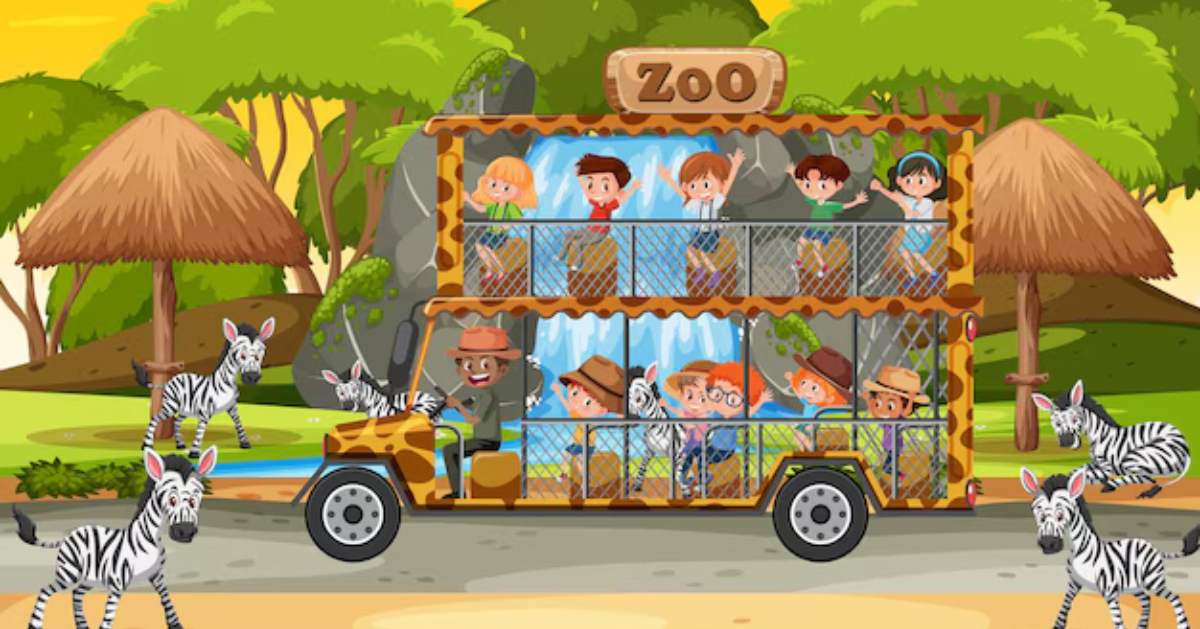Zooville is a captivating concept that delves into the intricate and diverse ways animals interact and thrive in their natural habitats. From the complex social structures of primates to the organized chaos of ant colonies, understanding these animal communities opens a window into the marvels of the natural world.
Also read more:https://Techarp.co.uk
What is Zooville?
Zooville represents the study and appreciation of animal societies. It highlights the ecosystems animals create, their survival strategies, and how they interact with one another. This term paints a vivid picture of how various species coexist, often in ways that mirror human communities.
The Beauty of Animal Social Structures
Animals are far from solitary beings; many live in well-organized groups with specific roles. Wolves, for example, operate in packs with clear hierarchies, ensuring order and cooperation. Similarly, elephants form tight-knit herds, led by a matriarch who guides them to water and food sources.
Communication in the Animal Kingdom
Communication is vital in animal societies. Dolphins use a series of clicks and whistles to interact, while bees perform intricate dances to share the location of nectar-rich flowers. Each species has evolved its unique way of conveying information, ensuring survival and harmony.
Leadership in Animal Communities
Leadership is a common trait in Zooville. Lions have dominant males leading their pride, while meerkats rely on a sentinel to watch for predators while the rest forage. These roles ensure safety and efficiency within their groups.
Mating and Reproductive Strategies
Animal societies exhibit a range of reproductive behaviors. Penguins, for example, are known for their monogamous bonds, while certain fish species change genders to adapt to their environment. These strategies often ensure the continuation of the species under varying conditions.
Cooperation and Teamwork
Cooperation is a cornerstone of many animal communities. Ant colonies and termite mounds are prime examples, with each member playing a crucial role in building, protecting, and sustaining their home. This teamwork is critical to their survival.
Conflict Resolution in Zooville
Even in the wild, conflicts arise. Animals resolve disputes through displays of dominance, vocalizations, or even temporary exile. Gorillas, for instance, use chest-beating as a show of strength to avoid physical fights.
Symbiotic Relationships
Zooville isn’t just about animals of the same species. Many animals engage in symbiotic relationships with other species. Oxpeckers, for instance, feed on ticks found on larger animals like rhinos, benefiting both parties.
Adaptation to Changing Environments
Adaptability is a hallmark of survival in Zooville. Animals evolve over generations to suit their environments. Arctic foxes, for example, change their fur color to blend with the snow in winter and tundra in summer.
Role of Play in Animal Communities
Play isn’t exclusive to humans. Many animals, including primates and otters, engage in playful activities. This behavior helps them develop essential skills like hunting and social interaction.
Predator-Prey Dynamics
Zooville also examines the balance between predators and prey. Predators like cheetahs rely on speed to catch their prey, while gazelles have evolved agility and group vigilance to evade capture.
Migration and Animal Movement
Migration is a fascinating aspect of Zooville. Birds like Arctic terns travel thousands of miles annually, showcasing endurance and navigation skills that remain a marvel of the natural world.
Survival Strategies in Extreme Conditions
Animals living in extreme environments have developed unique survival tactics. Camels, for instance, store fat in their humps to endure long desert treks, while polar bears rely on blubber for insulation in icy conditions.
Human Impact on Zooville
Human activities like deforestation and pollution have disrupted many animal communities. Conservation efforts, however, aim to restore balance and protect endangered species from extinction.
The Role of Technology in Studying Zooville
Technology plays a crucial role in understanding animal communities. GPS tracking, camera traps, and drones provide researchers with insights into animal behavior and migration patterns.
Why Understanding Zooville Matters
Exploring Zooville deepens our connection with nature and fosters a sense of responsibility for protecting it. Recognizing the intricate relationships within the animal kingdom inspires conservation efforts and ensures a sustainable future.
Conclusion
Zooville is a testament to the ingenuity and complexity of the natural world. By understanding animal communities, we not only gain insight into their lives but also learn lessons applicable to our own. These ecosystems remind us of the beauty of coexistence and the importance of preserving biodiversity.
FAQs
What is the significance of Zooville in understanding animals?
Zooville helps us understand the social structures, behaviors, and survival strategies of animals, offering insights into their world and our shared ecosystem.
How do animals communicate within their communities?
Animals use vocalizations, body language, and other signals like dances or pheromones to communicate and coordinate their actions.
What role do humans play in Zooville?
Humans significantly impact animal communities through activities like habitat destruction and climate change but can also aid through conservation efforts.
How do animals adapt to environmental changes?
Animals adapt through evolution, developing traits that enhance their survival in changing environments, such as fur color changes or migration patterns.
Why is preserving animal communities important?
Preserving animal communities maintains biodiversity, ensures ecosystem balance, and safeguards the planet’s health for future generations.

